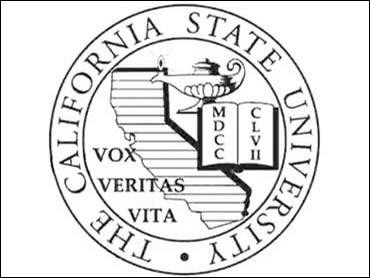
Judge's gavel on courtroom background. Law and justice. (Photo: Zolnierek, Shutterstock)
SCOTUS Rules Race Cannot Be Considered For University Admissions
Implications for California Institutions?
By Martin Marks, June 30, 2023 2:08 pm
This is Part III of a series on two U.S. Supreme Cases which will decide if racial preferences in college application acceptances will be allowed to continue at publicly funded schools.
The wheels of justice churn slowly–especially when it comes to United States Supreme Court cases. 16 months ago I wrote that the United States Supreme Court had agreed to hear two cases—Students for Fair Admissions v. President & Fellows of Harvard College and Students for Fair Admissions v. University of North Carolina, that would revisit the controversial practice of using racial preferences as criterion for admissions to college campuses.
In November of 2022 I penned Part II of the series reporting on the oral arguments before the Supreme Court which were heard on Oct. 31. Based upon the interactions between the attorneys representing both sides and the nine justices it was predicted that Affirmative Action used to achieve diversity on college campuses—a tool that had the blessing of previous Court Decisions, was on the precipice of being struck down as unconstitutional.
Now 8 months after oral arguments, the decision is in and as predicted SCOTUS has ruled that indeed the use of racial preferences in the university admissions process is unconstitutional using the Equal Protection Clause of the 14th Amendment as the basis for their decision. The decision was 6-3 in the University of North Carolina case and was 6-2 in the Harvard case, as the court’s newest member, Ketanji Brown Jackson recused herself from the latter has she at one time served on the Harvard Board of Overseers. The decisions predictably broke along ideological grounds. The court’s three liberal justices, Elena Kagan, Sonia Sotomayor, and Brown Jackson wrote dissenting opinions.
Sotomayor wrote the ruling:
“..cements a superficial rule of colorblindness as a constitutional principle in an endemically segregated society where race has always mattered and continues to matter.”
Brown Jackson followed up by writing that the United States:
“has never been colorblind. Given the lengthy history of state-sponsored race-based preferences in America, to say that anyone is now victimized if a college considers whether that legacy of discrimination has unequally advantaged its applicants fails to acknowledge the well-documented ‘intergenerational transmission of inequality’ that still plagues our citizenry.”
Chief Justice John Roberts writing for the majority opined:
“The Court has permitted race-based college admissions only within the confines of narrow restrictions: such admissions programs must comply with strict scrutiny, may never use race as a stereotype or negative, and must—at some point—end. Respondents’ admissions systems fail each of these criteria and must therefore be invalidated under the Equal Protection Clause of the Fourteenth Amendment.”
The majority went on to write:
“At the same time, nothing prohibits universities from considering an applicant’s discussion of how race affected the applicant’s life, so long as that discussion is concretely tied to a quality of character or unique ability that the particular applicant can contribute to the university. Many universities have for too long wrongly concluded that the touchstone of an individual’s identity is not challenges bested, skills built, or lessons learned, but the color of their skin. This Nation’s constitutional history does not tolerate that choice.”
This acknowledgement by the Roberts majority is a key component of the decision especially as it relates to the practices of California Universities as of late. It is important to remember that California voters passed a referendum in 1996 known as Proposition 209 which held that “The state shall not discriminate against, or grant preferential treatment to, any individual or group on the basis of race, sex, color, ethnicity, or national origin in the operation of public employment, public education, or public contracting.” An effort to repeal Prop. 209 failed in 2020 with the decisive defeat of Proposition 16.
In other words, the voters of California were more than a quarter of a century ahead of today’s SCOTUS ruling. State California universities have technically not been allowed to use race as a consideration in order to achieve their much-coveted diversity on campus.
The effect of Prop. 209 had predictable results. At elite California state universities and colleges, the percentages of Black, Latino, and Native American students accepted and matriculated dropped significantly, while those numbers for whites and Asians in particular rose. The same patterns held true for faculty hires as well.
Now, in addition to California public universities being barred from considering race as criteria for admission, the state’s private universities will now be governed under that premise.
In lieu of outright racial preferences, California resorted to other efforts to achieve diversity on campus including but not limited to multi-million-dollar outreach programs into low-income areas to recruit potential students who were presumed to be from racially underrepresented groups on campus. Additionally, just last year California eliminated the requirement of SAT and ACT scores as a part of the college application evaluation—tests that previously had Asian and white students far outpacing their black, Latino, and Native-American colleagues. The results have had limited success on some California campuses but not as much at some of the more elite California state universities. And with today’s SCOTUS ruling it is likely that other states will need to enlist these diversity strategies if they haven’t already.
In oral arguments before the court in October and ultimately in today’s decision, the Roberts majority posited that there was nothing stopping universities from considering the application essays of college applicants where they might have referenced their life experiences as a minority. Is this an “end run” around racial preferences? Debatable, but according to the Unites States Supreme Court as of today, legitimate.
The SCOTUS decision has arrived with much anticipation and fanfare, and politicos across the spectrum are sounding off.
Former President Donald Trump who appointed three of the nine sitting Supreme Court Justices to tilt the balance of the court to Conservative said:
“Thursday marked a great day for America, and the country is going back to all merit based. That’s the way it should be.”
In a Thursday tweet, Republican Presidential hopeful Governor Ron DeSantis wrote:
“College admissions should be based on merit and applicants should not be judged on their race or ethnicity. The Supreme Court has correctly upheld the Constitution and ended discrimination by colleges and universities.”
California Gov. Gavin Newsom condemned the court’s ruling in a statement Thursday, saying the court’s conservative majority changed the law:
“just because they now have the votes to do so, without any care for the costs to society and students around the country.”
And this clearly demonstrates how extreme leftists like Newsom misunderstand or outright dismiss the role of the judiciary in our form of government. It is not the role of the court to concern themselves for the costs to society and students around the country. On this and other matters it is the Left that expects those jurists in black robes to literally create law de novo that fits the Liberal world view and then continually support that view in their decisions. The only fealty a judge at any level of our judicial branch of government ought to have is to the Constitution. And when originalist jurists support the constitution and stand in the way of promoting a Liberal world view, Leftists like Newsom lose their minds.
Roberts writing for the majority, directly addressed this by referencing his three dissenting liberal colleagues on the court by stating:
“….the dissenting justices offer a remarkably wrong view of the judiciary.”
President Joe Biden also spoke to Thursday’s decision in a meandering, marginally intelligible statement. Biden said:
“Discrimination still exists in America. Discrimination still exists in America. DISCRIMINATION STILL EXISTS IN AMERICA! Today’s decision does not change that.”
If it was up to the Left, one tool for combating discrimination—real or imagined, is the use of discrimination itself. And today’s Supreme court ruling has all but thwarted that.
And make no mistake. If one student is the recipient of a benefit (admission) based upon race, then another student otherwise qualified for acceptance yet turned away is being discriminated against—because of race.
- Vice President Vance Visits The Golden State - February 22, 2025
- Is DEI Ready To DIE? - January 4, 2025
- Just How Effective Was The Abortion Debate in The 2024 Election? - November 18, 2024








One thought on “SCOTUS Rules Race Cannot Be Considered For University Admissions”